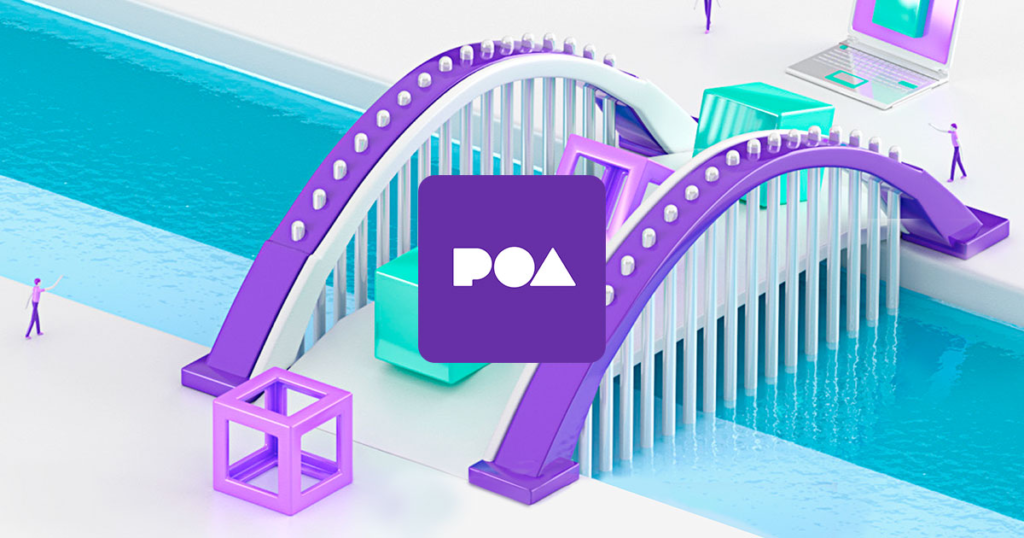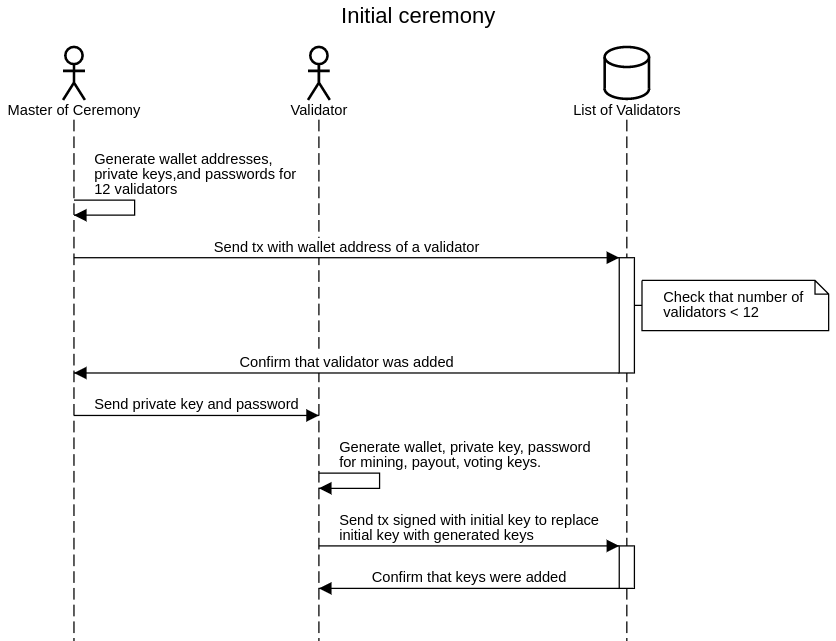POA Network, short for Proof of Authority Network, is a blockchain platform that has gained recognition for its unique consensus mechanism and various use cases. This Network is open, public network, based on the Ethereum protocol with the Proof of Authority (PoA) consensus obtained by independent pre-selected validators.
Although the Oracles Network is a fork of Ethereum, it is still a separate independent blockchain platform. The main feature of the Oracles Network is their Proof of Authority (POA) consensus mechanism, which can significantly reduce transaction fees and the use of smart contracts, and also ensures fast network operation.
The developers of POA Network determine the relevance of the development of their project with the demand for digital technologies. The network is a solution to the problem that arises when trying to transfer business to blockchain.

In this article, we’ll provide a comprehensive overview of POA Network, exploring its key features, advantages, and how it fits into the broader blockchain landscape.
POA Network Basics
The idea of Oracle Networks was announced in April 2017. In August 2017, the test network was launched with 12 independent validators.
The POA Network is committed to addressing a key drawback of a blockchain, which is scaling. To solve this problem, the project implements the original idea of a new protocol for achieving consensus. Proof of Authority is providing high bandwidth of POA Network. The principle of action is the formation of validators based on the confirmation of personal data, which become the key to so-called good faith.
We are talking about POA consensus. So what is POA consensus?
Proof of Authority (POA) Consensus
In a POA consensus mechanism, network validators are chosen based on their reputation, identity, or authority within the network. These validators are responsible for validating transactions and adding blocks to the blockchain. POA is known for its high throughput and low latency, making it an ideal choice for applications that require quick and efficient transaction processing.
Key Features of POA Network
- Interoperability: POA Network is Ethereum-compatible, allowing it to interact seamlessly with the Ethereum network. This compatibility opens up a wide range of possibilities for developers and users, including cross-chain interactions.
- Stable Gas Prices: Gas prices on POA Network are predictable and stable, making it easier for developers to estimate transaction costs and plan their applications accordingly.
- Identity at the Core: The PoA consensus relies on network validators with known identities, which enhances security and trust within the network.
- Low Transaction Fees: With stable gas prices and efficient consensus, POA Network offers low transaction fees, making it an attractive option for various use cases, including decentralized applications (dApps) and microtransactions.
The developers of the POA Network actually implement a master node system involving real individuals. Becoming a validator, such a user transfers his personal data, which is checked and stored in the system.
All validators must have an active notarial public license in the United States. Because validator identifiers are publicly available, validators are more likely to act in the interests of the network.
The block will be generated with an average time of 5 seconds. Each Oracle network has a current capacity of about 1.5 million transactions per day.
A faster network allows you to create new types of applications where the speed of response from distributed consensus is important.
Since the Oracles Network is compatible with Ethereum, Ethereum dApps can be easily transported and run on the Oracles Network with faster response times and higher bandwidth.
The block will be generated with an average time of 5 seconds. Each Oracle network has a current capacity of about 1.5 million transactions per day. There can be many network clones (called “Clone Swarm”), each serving a different community.
The Oracles Network also has a cross-chain bridge connecting any Ethereum compatible network. A typical use case would be an ICO project to raise funds from the Ethereum core network when issuing tokens to another, more cost-effective Oracles network. On a large scale, such bridges make it easy to transfer cost between networks. To recruit the first 12 validators, a ceremonial master was used. It distributed the necessary keys among the first participants. Granting authority to form and verify blocks allowed the launch of a network with a high level of scalability.

A validator generates three keys in the Initial Ceremony
DApp: mining key, required to participate in consensus and create blocks. voting key, required to create ballots and vote on ballots. payout key, not required. Used in Payout DApp to send daily mined coins from the mining key to the payout key. If a mining node should be compromised, an attacker will get daily earnings or less. At the moment, the POA Network has 23 validators.
POA Wallets POA is supported by a wide range of wallets compatible with Ethereum system.
Alpha Wallet is a mobile wallet available for iOS and Android.
MyEtherWallet, Metamask, and Trust Wallet, which are compatible with ETH tokens.
Nifty Wallet is a web wallet, which works as an extension to Chrome. Nifty Wallet provides an easy way to access the xDai Chain and other Ethereum based networks, and interact with compatible Ethereum Chain Distributed Applications (dApps) through the browser.
Use Cases
POA Network has found applications in various domains, including:
- DApps: Developers can build and deploy decentralized applications on the POA Network, taking advantage of its low transaction fees and Ethereum compatibility.
- Token Launches: POA Network is suitable for launching tokens and conducting ICOs (Initial Coin Offerings) due to its cost-effectiveness and security features.
- Blockchain Governance: Some projects use POA Network to establish transparent and efficient governance systems.
- Identity Verification: The known identities of network validators make POA Network suitable for identity verification solutions.
Conclusion
POA Network stands as a unique player in the blockchain space, offering a PoA consensus mechanism that prioritizes efficiency, security, and stability. Its compatibility with Ethereum and low transaction fees make it an attractive choice for developers and businesses exploring blockchain solutions. As the blockchain ecosystem continues to evolve, POA Network’s innovative approach to consensus may pave the way for new and exciting use cases in the decentralized world.




